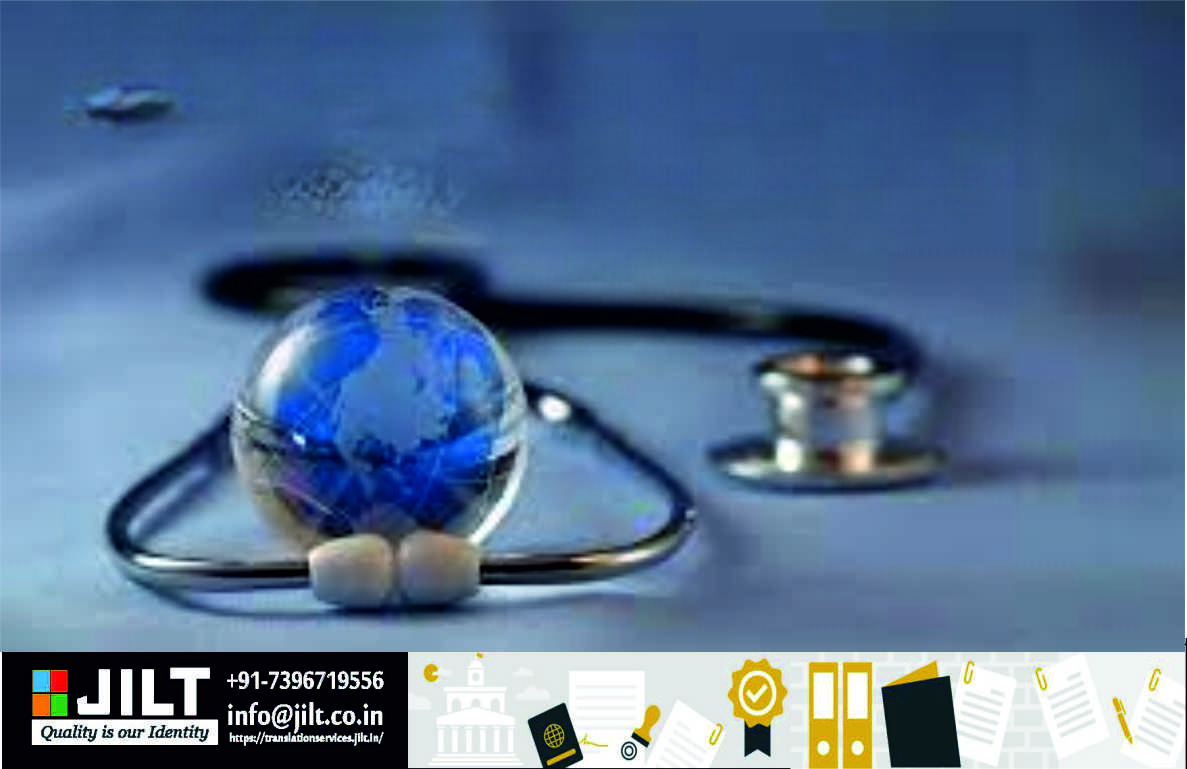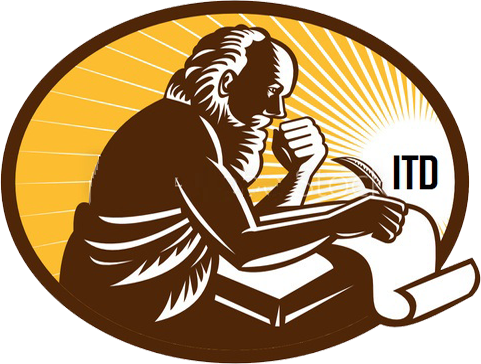
Tendencies in the Translation and Localization of Medical Documents
by Dr. Abu Mazhar Khalid Siddique - June 03, 2024
Introduction
Within the context of the healthcare industry, communication that is both precise and efficient is not only advantageous in today's increasingly globalized society; rather, it is absolutely necessary. As the world continues to become more interconnected, there is a growing demand for accurate medical translation and localization services. These services ensure that essential information, research discoveries, and medical developments are accessible to a wide variety of populations all over the world. In addition to overcoming language obstacles, improving patient care, and facilitating the distribution of essential healthcare knowledge, the relevance of these services cannot be overemphasized. In this blog, we look into the rising trends in medical translation and localization, highlighting the significant relevance of content localization in the process of building the future of healthcare communication.
The translation and localization of medical texts have undergone profound transformations as a result of the rapid growth of technology. The combination of artificial intelligence (AI) and machine learning (ML) has transformed these services in the present day, making it possible to do translations more quickly and with more precision. Computer programs that are powered by artificial intelligence are able to process vast amounts of medical texts, ensuring that the terminology is accurate and consistent. The importance of human expertise, on the other hand, continues to be irreplaceable since medical content necessitates a profound comprehension of context, cultural nuances, and specialized terminology. It is possible to produce translations that are not only accurate but also culturally relevant and compassionate by utilizing AI techniques in conjunction with human translators. Human translators have significant knowledge and pay close attention to detail.
The process of content localization, which is an essential component of medical translation, goes beyond the simple translation of words for words. The process entails modifying medical material so that it conforms to the cultural, linguistic, and regulatory constraints of the audience that is being specifically targeted. This procedure is essential for ensuring that patients properly comprehend medical instructions, treatment plans, and health information, which ultimately leads to an increase in patient safety and compliance. Moreover, patients are more likely to feel understood and valued when they are exposed to content that is tailored to their specific region (localized content). The demand for medical material that is localized will continue to increase as healthcare providers expand their reach to worldwide markets. This demand will highlight the importance of investing in translation and localization services that are of high quality.
New developments in medical translation and localization are emerging as a result of technological advancements, which will define the future of communication in the healthcare industry. A number of these topics are discussed in depth on this blog, with a special emphasis placed on the significance of content localization.
- Enhanced Language Technology:
The translation and localization of medical products are changing a lot thanks to machine translation and natural language processing. With the help of AI, machine translation is getting more accurate and quick, which makes it possible for medical knowledge in multiple languages to spread quickly. These improvements are very important in a field where correct and timely communication can have a big effect on patient care and results. AI-powered translation tools can quickly and easily handle large amounts of text, making sure that important medical information can be accessed by a wide range of people right away. This advance in technology is especially helpful in emergencies, when being able to quickly get translated medical directions can save lives.
These technologies not only make things more efficient, but they also help human translators by giving them more advanced tools for managing language and making sure the work is correct. Machine translation systems can find possible mistakes and flaws, so human translators can focus on the finer points and details that are unique to each situation. Natural language processing helps you understand medical jargon and complicated sentences correctly, which makes sure that translations are accurate and acceptable for the target culture. Using these cutting-edge technologies together makes the translation process faster and more accurate, which improves the quality of healthcare communication across languages and areas. This combination of human knowledge and AI-powered tools is a big step forward in sharing medical information around the world.
In the future, communication in the healthcare industry will be characterized by the seamless integration of cutting-edge technologies and human skills. As new developments in medical translation and localization emerge, they will continue to shape the landscape of healthcare around the world. By placing a high priority on precise and efficient communication, the healthcare industry can ensure that medical information is applicable across national boundaries, which will ultimately lead to better outcomes for patients and the promotion of global health developments. The purpose of this blog is to investigate these developing tendencies and to highlight the extremely important role that content localization plays in the process of establishing a truly global healthcare system.
- Customized Localization Solutions:
As opposed to merely translating the content, content localization involves adapting the information to the specific cultural and linguistic characteristics of the audience that is being targeted. In the future, innovations in medical translation and localization will emphasize the significance of individualized solutions that cater to the specific requirements of a variety of people and places. For the purpose of ensuring that medical information is not only accurately translated but also respectful of other cultures and appropriate for the target audience, localization companies employ professional teams who have substantial cultural and linguistic experience.
- Video and Multimedia Localization:
In this day and age of digital technology, the use of video and multimedia content in medical communication is becoming increasingly prevalent. When it comes to efficiently reaching and engaging audiences all around the world, localizing multimedia content is crucial. This includes anything from patient testimonials to instructional videos. In the field of medical translation and localization, one of the upcoming advances is the incorporation of specialist tools and technologies that can assist in the translation, subtitling, and voice-over of multimedia material. Because of this, healthcare practitioners and pharmaceutical companies are able to communicate effectively across language boundaries, which improves engagement and comprehension between the parties involved.
- Patient-Centered Localization:
Translation and localization in the medical field are no longer reserved solely for researchers and medical students. The modern healthcare system places a significant emphasis on patient empowerment and involvement, which in turn increases the demand for patient-centered localization. In the future, there will be an increased emphasis placed on the necessity of adapting patient-facing materials, such as medical records, discharge instructions, and prescription labels, to the cultural and linguistic preferences of individual patients. Localization that is centered on the patient increases patient safety, compliance, and comprehension, which ultimately leads to improved healthcare outcomes.
- Regulatory Compliance:
The healthcare industry is subject to severe regulatory systems in order to ensure the continued safety of patients and the maintenance of quality standards. The focus of future developments in medical translation and localization will be on assuring regulatory compliance across a variety of domains. The requirement for enterprises in the Lang-Tech industry to adhere to regulatory standards, such as the criteria established by the European Medicines Agency for medical product information, is becoming increasingly apparent to these businesses. In order to accomplish this, it is necessary to have a correct translation of product information booklets, labeling, and packaging in order to guarantee compliance with regional laws and regulations.
Conclusion
Due to the fact that it provides accurate, culturally relevant, and easily accessible healthcare communication, content localization is an essential component of the future of medical translation and localization. The field is increasing in order to meet the demand for multilingual medical content that exists all over the world. This is being accomplished through the implementation of enhanced language technology, individualized solutions, multimedia localization, telehealth localization, patient-centered methodologies, and regulatory compliance. In light of the fact that the world is becoming more interconnected, these tendencies will have an impact on the future of healthcare. They will make it possible for vital medical information to reach individuals all over the world and provide assistance to them.
Our organization employs native-speaking translators who can provide certified translation services in any language. We provide translation services in English (Urdu), Arabic (Spanish), German (French), Persian (Iranian), French (Italian), Japanese (Korean), Russian, and any other Indian or local language. Expert proofreaders at our company will inspect the translation. We also provide a courier service to deliver completed documents to our clients.
- Also Read :- Insurance Certificate Translation Services
- Also Read :- THE TOUGHEST LANGUAGES IN THE WORLD TO ANALYZE
- Also Read :- GUIDE TO RECEIVE A DEATH CERTIFICATE IN TAMIL NADU STATE AND PROCESS OF TRANSLATION
- Also Read :- BIRTH CERTIFICATE TRANSLATION \r\n& LEGALIZATION: A COMPREHENSIVE GUIDE
- Also Read :- National Trade Certificate Translation Services
- Also Read :- World cancer day is celebrated every year and how important it is.
- Also Read :- Email translations (JILT - Certified Translation Services)
- Also Read :- IMPORTANCE OF INTERNATIONAL VACCINATION CENTER TRANSLATION FROM ENGLISH TO ARABIC
- Also Read :- Income Certificate Translation Services
- Also Read :- Identity card translations (JILT - Certified Translation Services)
Search
Categories
Archives by Month
Popular Blog
QUICK TRANSLATION QUOTE
Need help with a translation?
Get in touch with us
Whether you have a specific project you want to discuss, need a translation quote or simply want to discuss your requirements, do not hesitate to get in touch with us.











Social Networks